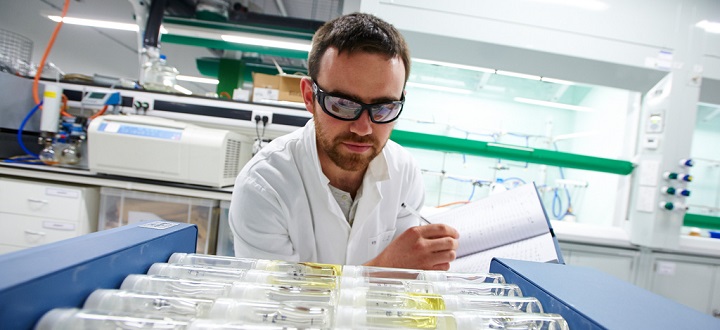Our pioneering chemists have discovered a way of creating a ‘rainbow’ of chemical products from one source, a method which could save time and money for industrial chemical manufacturers.
The breakthrough means that up to six different product types can be produced from a single material. Until now, chemists had only been able to extract two or three products from one source.
Rainbow chemicals
Dr Will Unsworth, one of the senior researchers involved in the work, said the discovery is similar to the way a rainbow splits light into different colours.
“A rainbow shows how a single source of light can produce a range colours with different visible properties - we have been able to apply this concept chemically to split one chemical source into an array of products with diverse properties. To be able to prepare six distinct product types in good yields from a single source is remarkable.”
The new technique could be used by the pharmaceutical and agrochemical industries.
“Making materials for biological testing in both of these industries is often time consuming and expensive – by making multiple products from a single precursor, there is a significant saving in terms of both time and money,” said Dr Unsworth.
The team made their discovery when they experimented with different combinations of catalysts and reactions conditions. Catalysts used by the team included rhodium, palladium, copper and silica gel.
Tenacity
The research involved PhD student Michael James who worked on the project alongside Dr Unsworth, Professor Richard Taylor and Professor Peter O’Brien. The team said Michael deserved enormous credit for his ideas and tenacity.
Michael said: “This discovery essentially arose from curiosity. We found that the more catalysts we tested, the more products we were able to make. Some of the products were formed via previously unreported pathways, adding to the significance of the work.”
The text of this article is licensed under a Creative Commons Licence. You're free to republish it, as long as you link back to this page and credit us.







